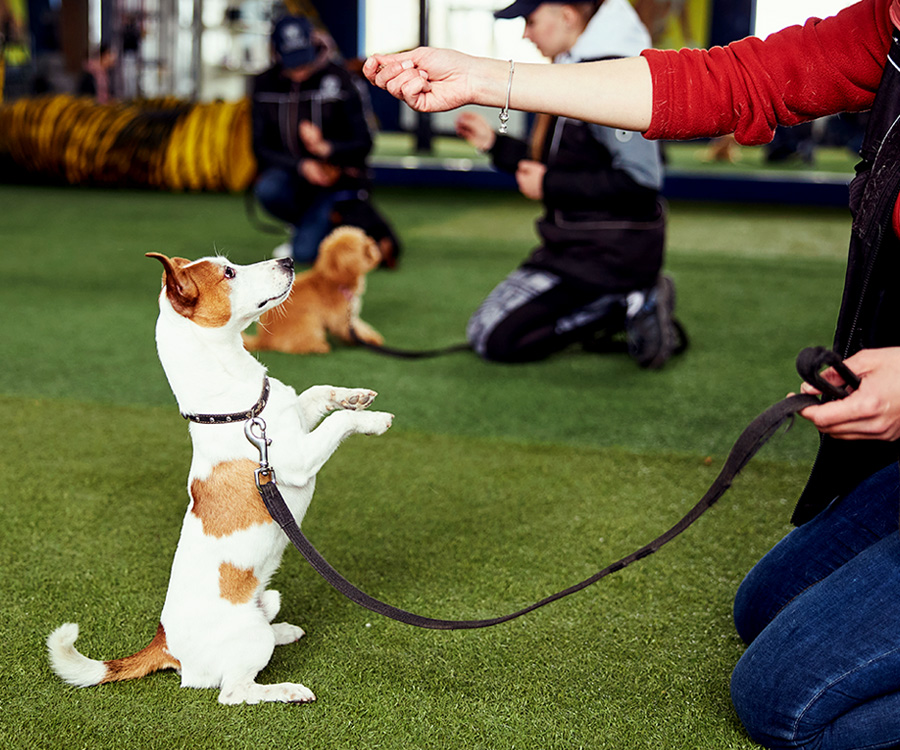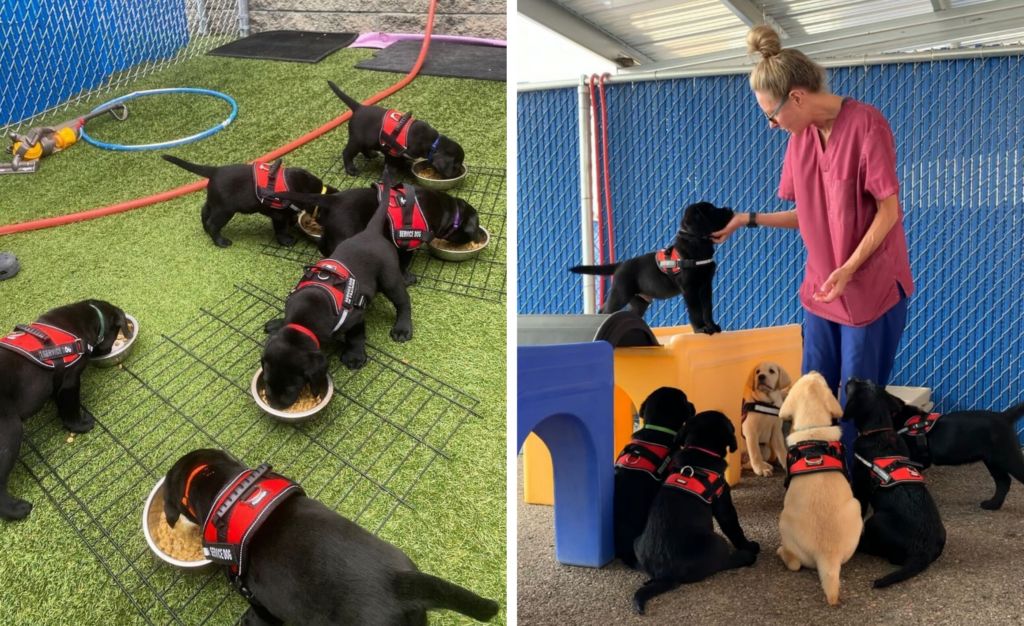Newbie's Guide to Successful Pet Dog Training in the house
Efficiently educating a pet dog in your home requires a nuanced understanding of canine behavior and effective communication approaches. Establishing clear training objectives, making use of high-grade benefits, and maintaining consistency throughout relative are crucial aspects. In addition, integrating training right into day-to-day routines can improve both involvement and retention. Nonetheless, numerous beginner trainers encounter challenges that may hinder progress. To navigate these complexities effectively, it's vital to explore numerous vital aspects that can transform your technique and bring about an unified partnership with your pet dog. What essential concepts should every newbie grip to make sure success?
Understanding Dog Actions
Comprehending dog actions is necessary for efficient training and promoting a harmonious relationship between people and their canine companions - Puppy Training. Pets connect largely through body movement, articulations, and faces, making it vital for owners to analyze these signals accurately. Recognizing behaviors such as tail wagging, growling, or cowering can supply understandings right into a canine's emotion and purposes
Furthermore, understanding the all-natural instincts of pets, such as their pack mentality, assists owners establish management roles within the family. This is vital for creating a structured environment where pet dogs really feel secure and are a lot more responsive to training. Dogs are likewise affected by their socialization experiences; very early direct exposure to various settings, individuals, and other animals can considerably shape their actions later in life.
Usual behavior concerns, such as hostility, anxiousness, or too much barking, frequently stem from misconceptions or unmet demands. Observing and addressing these problems immediately can prevent escalation and make sure a positive training experience. By fostering a deep understanding of pet behavior, owners can customize their training methods to match their canine buddies, ultimately causing a mannerly and happy family pet.

Necessary Educating Devices
A well-appointed training room can dramatically boost the efficiency of dog training in your home. Important training tools make sure that both the pet and the trainer can involve in efficient sessions that foster discovering and bonding.

Spending in a sturdy chain and a comfy, well-fitting collar or harness is important for security and control. These tools assist establish borders and make certain the pet dog stays safe and secure throughout training. In addition, a marked training location, devoid of diversions, help focus for both the fitness instructor and the dog.
Training aids such as training pads, cones, or dexterity tools can also boost the experience by presenting selection and obstacles. Finally, having a notebook or digital application for tracking progress can be vital, enabling you to note successes and areas for renovation. Utilizing these important tools will develop a positive training environment and lay the structure for effective understanding.
Developing a Training Routine
Developing a consistent website here training routine is crucial for reliable pet training in the house. A well-structured routine not just aids in enhancing preferred habits but likewise offers your pet with a complacency and predictability. To produce an effective training regular, begin by determining particular training goals, such as basic commands, leash walking, or house-breaking.
Choose a marked time each day for training sessions, ideally when your canine is responsive and sharp. Sessions needs to be short, approximately 5 to 15 mins, to keep focus and protect against tiredness. Uniformity in timing and environment will improve your dog's learning experience.
Integrate training right into day-to-day activities to enhance abilities. Practice commands during strolls or mealtime, which integrates finding out into natural routines. In addition, continue to be adaptable and adjust the routine as necessary, accommodating your pet's energy levels and state of mind.
Positive Reinforcement Methods

When implementing favorable reinforcement, it is crucial to select rewards that are encouraging for your dog. High-value treats, such as small items of poultry or cheese, can be particularly efficient during training sessions. In addition, differing the incentives can preserve your pet's rate of interest and enthusiasm.
Begin with basic commands, like "sit" or "remain," and progressively progress to a lot more complex tasks. Uniformity is key; make certain that all family members make use of the same commands and incentive systems to prevent complication.
In addition, it is important to stay person and stay clear of aggravation. Pet dogs, like people, learn at their own pace. By fostering a helpful training setting with positive reinforcement, you can boost your canine's understanding experience while reinforcing the bond in between you and your furry buddy, laying the groundwork for successful training results.
Typical Training Obstacles
While educating a pet at home can be a rewarding experience, it commonly features a collection of usual difficulties that can check both perseverance and uniformity. One common problem is disturbance. Pets might become easily averted by sounds, activities, and even aromas in their setting, making it difficult to maintain their emphasis throughout training sessions.
An additional obstacle is incongruity in commands and reinforcement. If relative make use of different hints or benefits, it can confuse the canine and hinder important site progression. Establishing a unified technique is vital for reliable communication.
In addition, pets can experience irritation or stress, particularly if they do not understand what is anticipated of them. This can bring about undesirable actions, such as barking or eating.
Lastly, the timing of reinforcement is essential. Delayed rewards can lessen the efficiency of favorable reinforcement, as dogs may fail to link the actions with the benefit.
Overcoming these obstacles needs dedication, clear communication, and an organized training strategy - Puppy Training. Acknowledging and attending to these usual obstacles will pave the means for a more effective and delightful training experience in the house
Final Thought
In conclusion, effective dog training at home requires a comprehensive understanding of canine actions and reliable interaction approaches. By establishing clear training goals and utilizing premium treats along with positive support, the training process becomes a lot more gratifying for both the pet dog and the fitness instructor.
Developing a consistent training routine is essential for effective pet dog training at home.Positive reinforcement strategies are fundamental to efficient pet dog training, promoting wanted behaviors through rewards instead than punishment. By cultivating a helpful training setting with positive support, you can improve your dog's knowing experience while reinforcing the bond between you and your furry companion, laying the groundwork for effective training end results.
In final thought, effective dog training at home requires an extensive understanding of canine actions and effective interaction techniques. By developing clear training objectives and using high-quality treats alongside positive support, the training process comes to be extra rewarding for both the dog and the trainer.